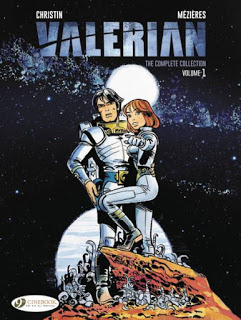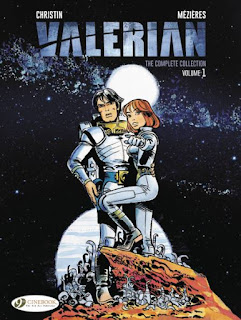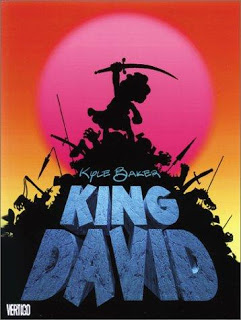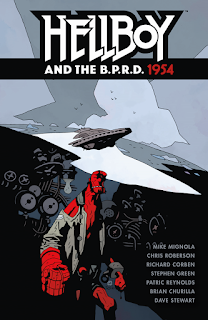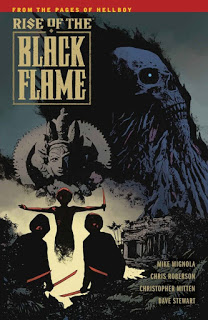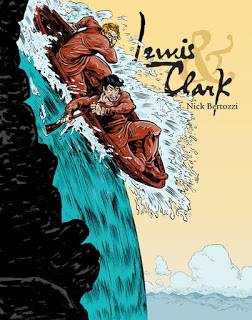Book-A-Day 2018 #110: Valerian: The Complete Collection, Vol. 1 by Pierre Christin and Jean-Claude Mezieres
Other people’s childhood adventure stories are rarely that impressive when you discover them as an adult. That doesn’t mean they’re bad — or any more so than your childhood adventure stories — it just means that you should have read them at the right time, when you were ten or so and ready for anything.
I was forty-eight when I first read the adventures of Valerian and Laureline. It was just the other week, in Valerian: The Complete Collection, Vol. 1 . That is much older than it should be, but I could argue that I’m not French, which made it hard to come across these books at the proper time. In any case, I read them now. So what?
Complete Collection Vol. 1 brings together the first three adventures of our space-and-time-hopping duo, written by Pierre Christin and drawn by Jean-Claude Mezieres. (And even the front matter agrees that the first two are a bit off-model for what the series eventually became — a little thin, a little less interesting. So maybe it’s not just me.) This particular volume looks to be a slightly rebranded version — for the recent Luc Besson movie — of the first in a standard collection of the whole series. And a big uniform set of books is the kind of thing that only happens, obviously, when something is really popular for a long time.
The omnibus aspect and the movie means there’s more frontmatter here than usual for a graphic novel — a three-way interview with Christin, Mezieres, and Besson (conducted by no one the book cares to mention); several very puffy “isn’t this thing totally awesome” mini-essays; a claim that everything in filmed SF since about 1970 directly descends from Valerian; and a precis of the three stories reprinted here. All of that frontmatter is also copiously illustrated, with panels from the comics, photos of the creators and Besson, concept art from the movie, and related stuff.
First up is 1967’s Bad Dreams, in which 28th century spatio-temporal agent Valerian is sent back from his leisure-society utopian future to the French Middle Ages in pursuit of a fugitive from his time who has discovered working magic and is going to use it to conquer the world. (The “magic that actually works” thing is strangely not a big deal, and looks like it never came up again.) Along the way, he meets a local girl, Laureline, and has to recruit her when she becomes a unicorn for a while learns about time travel and Valerian’s organization.
Next was a big two-part epic from 1970, The City of Shifting Waters and Earth in Flames, in which the villain from Bad Dreams (Xombul) escapes and time-travels back to the obligatory late-20th-century apocalypse, landing in a 1986 New York inundated by rising seas in the very early days of an event that I have to assume will kill the majority of mankind. (As usual, this is just background — what I tend to call “backswing fantasy” because it clears out space for the mighty hero to swing his sword.) Valerian and Laureline team up with a surprsingly-not-depicted-in-a-racist-way black crimelord (and, eventually, a Jerry-Lewis-as-the-Nutty-Professor scientist) to eventually defeat Xombul and keep the timeline clean.
“Keeping the timeline clean,” of course, means “letting several billion people in the northern half of the world die horribly over the course of the next few months or years.” But you can’t make adventure stories without megadeaths, can you? And, anyway, our heroes do their job and get out — hooray!
The omnibus ends with what they call the first real adventure of Valerian and Laureline, 1971’s The Empire of a Thousand Planets. This is the one, I think, that was adapted into the Besson movie, though the story here doesn’t bear much connection to what I saw in trailers. Our heroes are sent to another planet in their own time — I have the vague sense the time-travel plots stopped entirely at this point, but I could be wrong — Syrte, the seat of an empire that spans a thousand planets. (Earth, by comparison, is rich and powerful technologically, but does not seem to be an imperial power and is mostly hermetic, since the vast majority of its citizens spend all of their time in computer-controlled dreams.)
They are shockingly unprepared for this mission, in ways that are convenient to the plot and to create quick action, and learn that a group called the Enlightends has been slowly taking over Syrtean society and life. The Enlighteneds capture and shanghai our heroes, and the rest of the story is a series of escapes and recaptures, battles and confrontations, and learning about various plot-important things from sneaky overhearing and Talking Killers.
But, then again, it is an adventure story, so I just restated that in a roundabout way. Valerian and Laureline are in a somewhat old-fashioned style — these stories are forty years old — because they are still alive to be captured (and escape again) repeatedly. Somewhere along the line we realized that horrible villains would really just kill people, and our adventure stories changed tone.
These three stories are fun and zippy, full of action and incident, and they do definitely get better and more assured as they go along. (Bad Dreams isn’t bad, but it’s a little shaky, and the casual use of transformation magic in particular is far different from the rest of the material here.) They’re still fine fare for ten-year-olds of all ages, and I enjoyed them quite a bit, even if I hadn’t imprinted on them as a youth.
![]()
![]()
Reposted from The Antick Musings of G.B.H. Hornswoggler, Gent.

